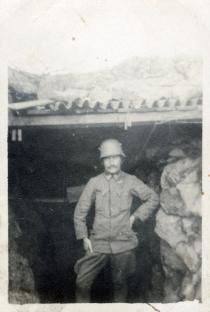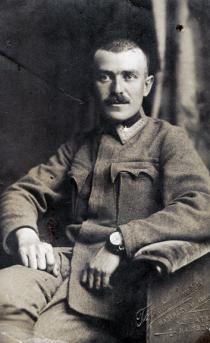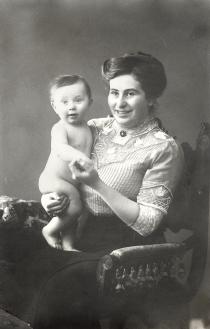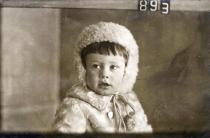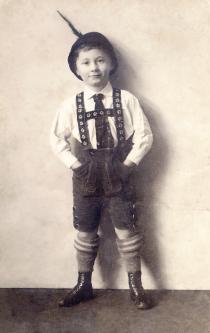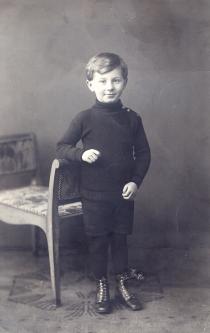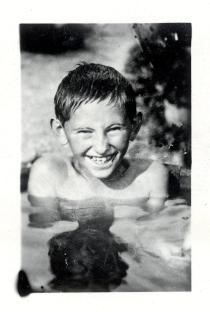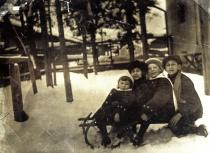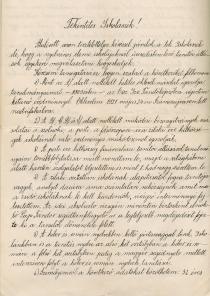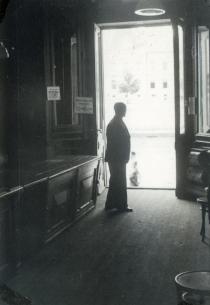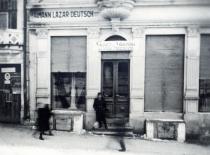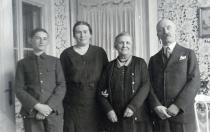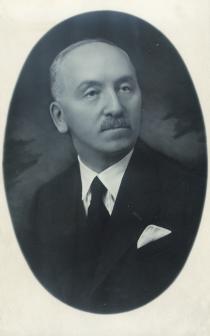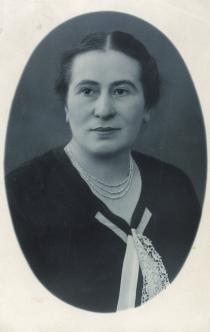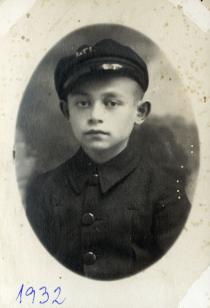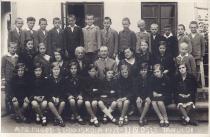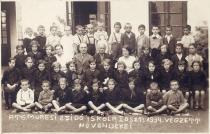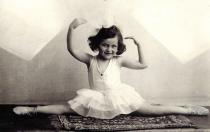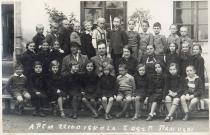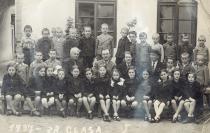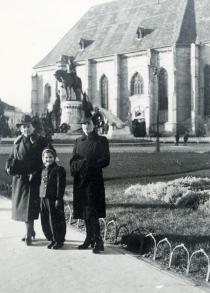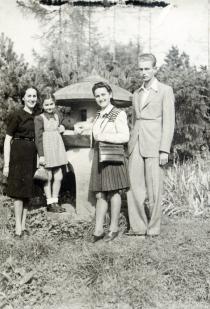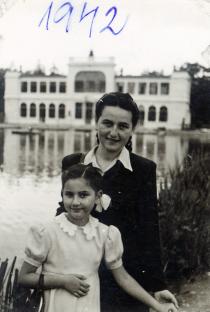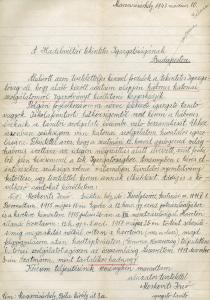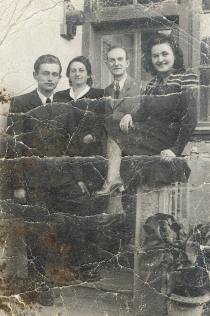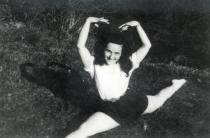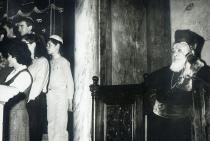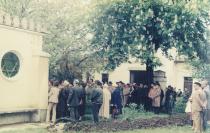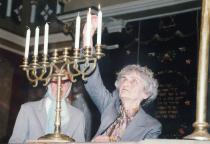This is a picture of my father, Jeno Moskovits, me and my classmates of the Jewish elementary school in Marosvasarhely. It was taken in 1934 when I finished the first grade. I don't know how this picture survived.
I'm in the second row fourth from right. Also in the second row, the second from right, is my girlfriend, Vera Kertesz. We were deported to the same place and we came back together.
We remained good friends after we came back. She then married a Jewish man called Kraus in the 1970s. The sixth girl from the left in the second row was called Juci Heilper, and she was a very good friend of mine, too.
The fifth is another one of my good friends, Karmi Braun. She got married, too, immediately after the war and emigrated to Israel. She had a child who still lives in Israel. Karmi died in a car accident, a car ran over her. Very few of my classmates survived deportation.
My father became the principal of the Jewish elementary school, and he was a principal-teacher because he taught, too. He didn't teach me, though.
Back then the same teacher followed a class through the four grades, just like today, and my class was assigned another teacher, Ferenc Rado, who started a new 1st-grade class. He is the grey-haired man in the picture.
We loved going to the Jewish school. I had many girlfriends there and everybody knew everybody, and my classmates and I got used to each other. There were also festivals like Purim, when a Purim ball was organized.
This was a holiday, and in the largest classroom - which wasn't that big though - the desks were put aside, musicians were hired and everybody could dance. The musicians weren't Jews and they played dance tunes, not religious music. T
he students had to bring cakes, cookies, fruits and soda to the Purim balls - there was no Pepsi, Fanta or anything like that, we were quite happy with water. Everybody brought what they could and they put it on a table in another room.
That was how the buffet was set up. I don't remember whether we had to pay a small fee for the food or if we could eat for free. However, maybe the money we raised had a certain purpose, but I don't know what it would have been used for.
Every class had a presentation of something their teacher had rehearsed with them. There were students who could sing, others were good at reciting or learning a dance. There were some Jewish dances, but other types of dances, as well.
I only remember one kind of Jewish dance, a hora-like one, with people standing in a circle. We called it Julala. I remember we used to sing this word, and it also had a melody. I remember the Jewish anthem, the Hatikvah, we always used to sing it at school.
These were the special occasions. On Purim we never really dressed up.The holiday of Chanukkah was also organized at the school with the candlelight burning throughout the eight days of Chanukkah, and we were given small packages- all part of the tradition.
At the end of each school year, class portraits were taken. There was a photographer on the main square called Weintraub, his studio was in one of the courtyards. The school always asked him to take the pictures.
It is possible that he was asked because he was a Jewish photographer. The camera was on a tripod and looked like a big monster. It had a black cover, and we used to laugh a lot when the photographer got under the black cover and then looked out and said, 'Now you must look at me!' - in other words, having a picture taken was quite a ceremony.

